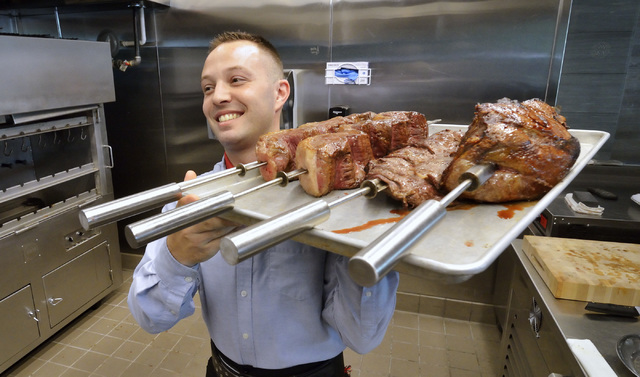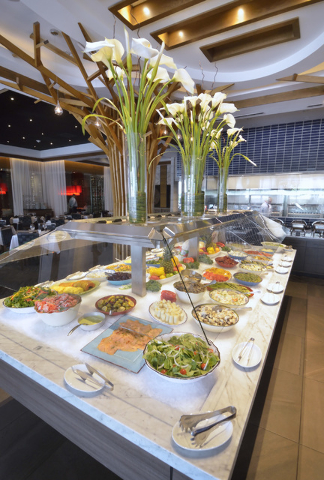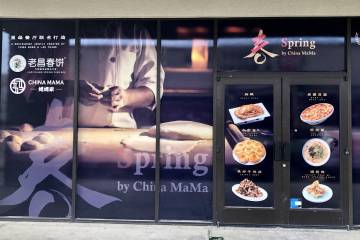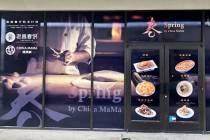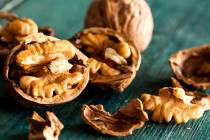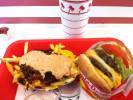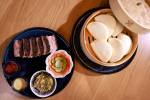Brazil’s cuisine as diverse as the country’s population
Let’s take a break from the victories and losses and controversies and scandals playing out in Brazil these days and think about — what else? — the food.
You could, were you being a bit whimsical, consider churrasco the Brazilian equivalent of fried chicken. Both dishes hail from the southern part of countries that have about the same geographical mass and regional cuisines driven by a rich diversity of immigrants, and both have spread throughout their native countries and beyond.
To most Americans today, Brazilian food = Brazilian steakhouse, aka churrascaria, where they cook a variety of meats on skewers and bring them around to your table, slicing off a serving on request.
Adam Gomes, co-owner of Via Brasil Steakhouse on Fort Apache Road, said the style grew out of the Brazilian tradition of beef cattle.
“The simple explanation is the cowboys used to put the meat on the spit, and they would roast the different meats that way,” he said. “It evolved into steakhouses.” Today, he said, most high-end steakhouses in Brazil serve churrasco, which is a rough translation of the Portuguese word for barbecue.
Gomes said when Via Brasil opened eight years ago, the style was new to most people in the valley. They’ve become familiar with it over the years as the restaurants have multiplied, with several chains outlets moving into the area.
Among them is Fogo de Chao, which was founded in Brazil in 1979 and has more than 40 restaurants there and in the United States and Mexico; in Las Vegas, the company has outlets at the Hughes Center and in Downtown Summerlin. Shortly before the Olympics started in Rio de Janeiro, Fogo de Chao launched a guide to Brazilian cuisine on its website, fogodechao.com. And one purpose for it was to point out that churrasco is not beyond the range of the home cook.
“It’s very practical, very easy to make,” said Marcio Bonfada, West Coast area manager and head gaucho chef for the company. “I spend a lot of time traveling, and my wife is always cooking meats on the grill.”
Bonfada said his favorite to cook at home is picanha, the most familiar cut to churrasco fans.
“I would go to a trusted source for a good quality piece of meat,” he said. Ask the butcher for the cap of the top sirloin, with the fat cap left on. Make the grill as hot as possible, cooking over an open flame, and it’ll seal in the juices as it cooks the picanha.
“The hotter the grill is, the more it’s going to seal that meat and keep the flavor,” Bonfada said.
Churrascarias generally season their meats simply, with sea salt.
“My dad used to say, ‘Just keep it simple and you’ve got all that flavor,’ ” Bonfada said. “What you’re actually tasting is that very particular flavor from that cut.” Fogo de Chao serves 16 cuts of beef, pork, chicken, lamb and sausages.
Via Brasil, the roots of which extend 38 years to a restaurant in Manhattan’s Little Brazil section, offers options with 14 cuts of beef, chicken, pork and fish, or 21 cuts that include grilled shrimp, lamb and rib-eye steak basted with thyme and rosemary and finished at the table in a cast-iron pan with butter and garlic.
“It’s all about showcasing each cut of meat and what it has to offer,” Gomes said. “Each cut is prepared and presented different ways as well.”
Bonfada said Fogo de Chao’s gaucho chefs are responsible for the meat, from receiving it and checking the quality to butchering it from primal cuts to skewering and grilling to serving.
“A lot of people think those guys are just the servers, but they’re actually the chefs,” he said. One gaucho is assigned to each cut of meat.
“They know how to prepare all of them, but on one shift they work with a particular kind of meat,” he said. “It’s every day working to know the right temperature and all that, really knowing that particular kind of meat so you know what part is rare, what part is well done.”
But meats aren’t the only thing on the menu at churrascarias. Like most, both Via Brasil and Fogo de Chao offer extensive buffets of vegetables, salads and side dishes, some side dishes served family-style at the table and pao de queijo, which are cheese rolls made with yucca or tapioca flour.
“People have one and they just keep eating,” Gomes said of the rolls. “They don’t want to fill up, but they’re so addictive.”
The diversity of foods is a big part of the draw of a churrascaria.
“You can’t beat the variety,” Gomes said. “You can try a little bit of everything.” Plus, he said, the all-you-can eat concept is a value for many people.
“You can pace yourself, can have the same cut as much as you like,” Bonfada said. “You, as the customer, control the pace. They’re not big pieces of meat that you’ve got to eat right away or it’s going to get cold.”
“It’s a little bit of a show,” Gomes said. “It’s not just going out to dinner. I think that drives a lot of the parties that we do.”
PICANHA CON ALHO
1½-pound piece of top sirloin cap, with fat cap
Garlic marinade:
1 whole medium to large garlic bulb
1/4 cup vegetable oil
Sprinkle of sea salt
Cut top sirloin cap into eight to 10 portions, making sure every piece has a fat cap on top. (Cut into approximately 2½-by-inch pieces, and leave ¼ to ½ inch fat cap on the top of each piece.)
Blend garlic, vegetable oil and salt for 1 to 2 minutes in blender. Keep cool until ready for use.
Place meat pieces on metal skewers with the marbled cap on top. Using a spatula, spread garlic marinade, generously coating both sides of the meat.
Position skewered beef several inches from the grill top or flame, not letting it rest directly on the grill, which can cause the marinade to burn or stick. Grill 3 to 8 minutes per side, depending on grill temperature and desired doneness.
Serve two to three pieces per guest.
Serves 4.
PAO DE QUEIJO
6 eggs
2 1/8 cups canola oil
1 tablespoon salt
3½ cups sweet manioc flour (may substitute yucca or tapioca flour)
¼ cup sour manioc flour (may substitute yucca or tapioca flour)
6 ounces grated Parmesan cheese
2¼ cups milk
Nonstick spray
Heat oven to 350 degrees.
Place eggs, oil, salt, flours and cheese in a bowl and mix well. Add milk and mix to incorporate. Blend with a hand-held electric mixer until smooth.
Spray the cups of a miniature muffin pan with nonstick spray. Carefully pour batter into each cup, stopping about 1/8 inch from the top.
Place into a 350-degree oven and bake for 12 to 15 minutes. Remove from oven and pop out onto a board. Serve warm.
Makes about 40.
Recipes from Fogo de Chao



